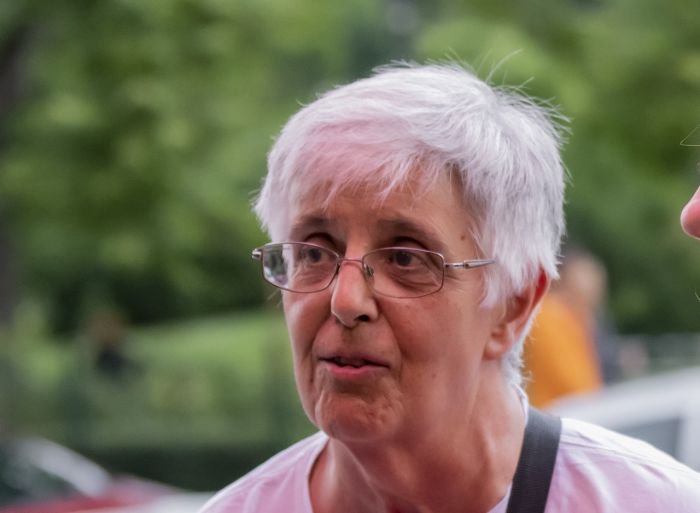 The favorite phrase "Zucker kommt zuletzt" (German: Sugar comes at the end) means that the best comes at the end, but that's not how I would describe the play "Little Red Riding Hood" by author and director Luana Gramegna, produced by Zaches Teatro from Florence (Italy), the last performance of the competition program of the Third International Festival of Professional Theatres for Children and Youth "Novi Sad Theatre Festival" (May 8-15, 2024).
The favorite phrase "Zucker kommt zuletzt" (German: Sugar comes at the end) means that the best comes at the end, but that's not how I would describe the play "Little Red Riding Hood" by author and director Luana Gramegna, produced by Zaches Teatro from Florence (Italy), the last performance of the competition program of the Third International Festival of Professional Theatres for Children and Youth "Novi Sad Theatre Festival" (May 8-15, 2024).
The audience goes to see fairy tales expecting familiar content, so in the story of Little Red Riding Hood (who got her nickname because she persistently wore a red hat), we have certain default scenes: while bringing food to her sick grandmother, the girl meets a wolf who persuades her to pick flowers for her grandmother, because he wants to get to grandmother before the girl in order to eat her. The wolf, disguised as a grandmother, tricks Little Red Riding Hood and eats her too. The favorite version (Brothers Grimm) has the rescue hunter who pulls the grandmother and granddaughter alive from the wolf's belly, and fills the wolf with stones, while in the other version (Perrault), the story ends with Little Red Riding Hood being swallowed by the wolf. The play "Little Red Riding Hood" by the "Zaches" theater introduces quite a bit of confusion into the understanding of this story, because after the mother and Little Red Riding Hood (Enrica Zampetti, Amalia Ruocco) prepare food for the grandmother with choreographed movements (they knead the dough for an infinite time), Little Red Riding Hood heads through the forest to the grandmother's house (apparently at night?!). In the forest, she is caught by a thunderstorm, which lasts for a very, very long time and causes consternation (and tears) among most of the children in the audience (the music by Stefano Ciardi didn't sound very friendly either). A terrifying storm is accompanied by an ominous rustling of trees (shown by shadows), among which appears the outline of a wolf (Gianluca Gabriele) following Little Red Riding Hood. Their unexpected meeting (also difficult to understand) leads to certain closeness between the two (which is all the more problematic, since the wolf soon rushes to the grandmother's house where, using shadows, it swallows the grandmother). And that's where the story ends... Because, apparently, we didn't watch a fairy tale, but a dream of a little girl whose mother told her a fairy tale about Little Red Riding Hood as a bedtime story, I guess?!
Of course, it is the copyright to intervene in the given content, but I am not entirely sure that it makes sense to choose known content and then twist it beyond recognition, disrupt the atmosphere and fundamentally disrupt the relationships between the characters. I am also unclear about certain directing procedures, because while it is logical to use a mask for the character of the wolf (although the overall impression is not at all "wolfish"), I do not see why the faces of the mother and Little Red Riding Hood are hidden under the mask (the girl seems almost frantic), because that way expression of feelings is blocked (overall design by Francesco Givone).
Occasional poetic scene or a visually appealing picture were not enough to keep the attention of the little ones (7+), nor us adults (x+).
Olga Vujović
The author is a theater critic from Croatia. She writes for www.kritikaz.com and on the portals wish.hr, fama.com.hr, virovitica.net. She is a member of the Croatian Society of Theatre Critics and Theatrologists.



